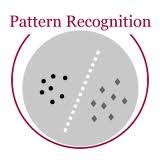This paper investigates the downlink channel state information (CSI) sensing in 5G heterogeneous networks composed of user equipments (UEs) with different feedback capabilities. We aim to enhance the CSI accuracy of UEs only affording the low-resolution Type-I codebook. While existing works have demonstrated that the task can be accomplished by solving a phase retrieval (PR) formulation based on the feedback of precoding matrix indicator (PMI) and channel quality indicator (CQI), they need many feedback rounds. In this paper, we propose a novel CSI sensing scheme that can significantly reduce the feedback overhead. Our scheme involves a novel parameter dimension reduction design by exploiting the spatial consistency of wireless channels among nearby UEs, and a constrained PR (CPR) formulation that characterizes the feasible region of CSI by the PMI information. To address the computational challenge due to the non-convexity and the large number of constraints of CPR, we develop a two-stage algorithm that firstly identifies and removes inactive constraints, followed by a fast first-order algorithm. The study is further extended to multi-carrier systems. Extensive tests over DeepMIMO and QuaDriGa datasets showcase that our designs greatly outperform existing methods and achieve the high-resolution Type-II codebook performance with a few rounds of feedback.
翻译:本文调查了5G不同网络中由具有不同反馈能力的用户设备组成的用户设备(UES)组成的下行通道状态信息(CSI)的遥感情况。我们的目标是提高CSI用户的CSI精确度,只有低分辨率类型I代码手册才提供低分辨率类型I的编码手册。虽然现有工作表明,通过根据预先编码矩阵指标(PMI)和频道质量指标(CQI)反馈的反馈解决阶段检索(PR)的制定,它们需要许多回馈回合。在本文件中,我们提出一个新的CSI感测计划,可以大大减少反馈管理费用。我们的计划涉及一个新的参数层面的减少设计,利用附近用户的无线频道的空间一致性,以及限制的PR(CPR)的配置,以PMI信息为CSI可行区域的特点。为了解决由于未编码化的矩阵指标(PMI)和频道质量指标(CQI)的反馈挑战,我们制定了一种两阶段的算法,首先确定并消除不活跃的制约因素,然后是快速的首级算法。我们的研究将进一步扩展到多级的参数系统。
相关内容
- Today (iOS and OS X): widgets for the Today view of Notification Center
- Share (iOS and OS X): post content to web services or share content with others
- Actions (iOS and OS X): app extensions to view or manipulate inside another app
- Photo Editing (iOS): edit a photo or video in Apple's Photos app with extensions from a third-party apps
- Finder Sync (OS X): remote file storage in the Finder with support for Finder content annotation
- Storage Provider (iOS): an interface between files inside an app and other apps on a user's device
- Custom Keyboard (iOS): system-wide alternative keyboards
Source: iOS 8 Extensions: Apple’s Plan for a Powerful App Ecosystem




